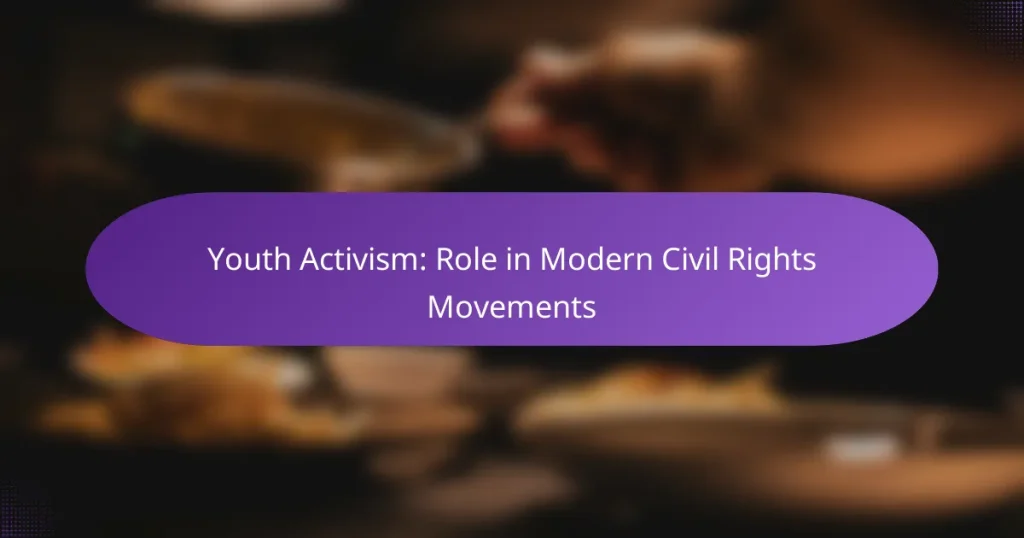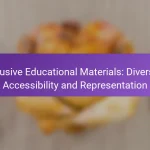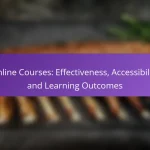Youth activism plays a crucial role in shaping modern civil rights movements, as young individuals harness their passion and digital tools to advocate for social justice. By addressing urgent issues such as climate change, racial equality, and gun control, they not only raise awareness but also mobilize communities and influence policymakers. Their innovative strategies and collaborative efforts amplify their voices, making a significant impact on the fight for equality and change.
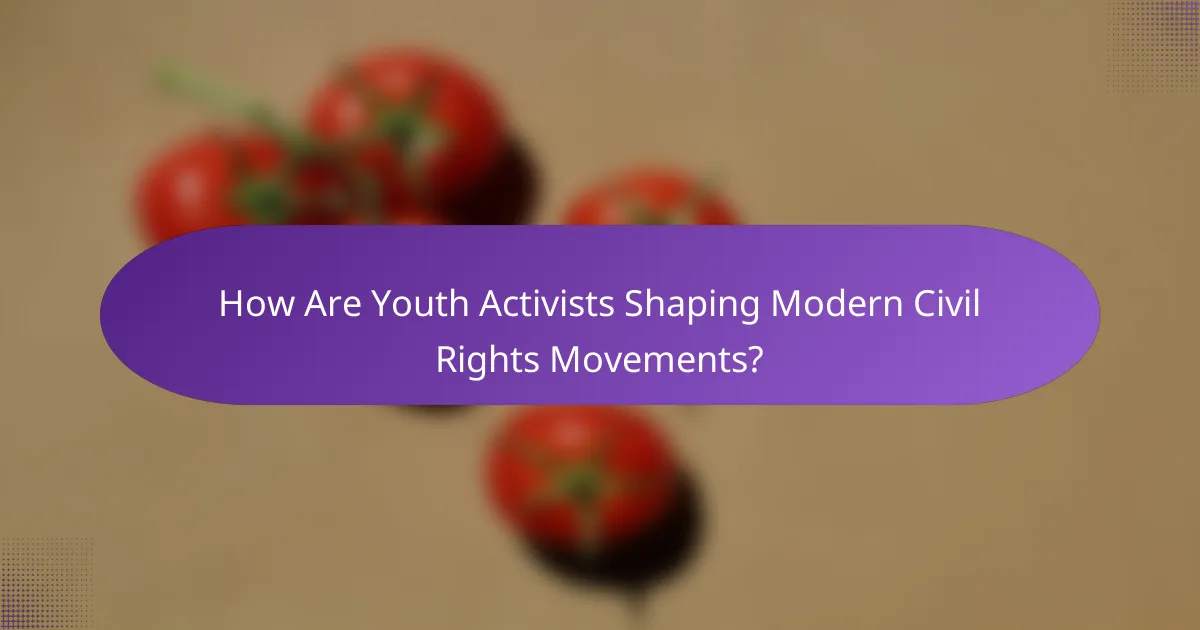
How Are Youth Activists Shaping Modern Civil Rights Movements?
Youth activists are significantly influencing modern civil rights movements by leveraging their energy, creativity, and digital platforms to advocate for social change. Their involvement not only raises awareness but also mobilizes communities and pressures policymakers to address pressing issues.
Increased visibility through social media
Social media platforms like Twitter, Instagram, and TikTok have become essential tools for youth activists, allowing them to reach a global audience quickly. Campaigns like #BlackLivesMatter and #FridaysForFuture demonstrate how online visibility can galvanize support and foster solidarity across diverse groups.
These platforms enable activists to share personal stories, organize events, and disseminate information rapidly. The ability to go viral can lead to significant media attention, amplifying their messages and attracting new supporters.
Grassroots organizing and mobilization
Youth activists often engage in grassroots organizing to build local movements that address specific community needs. This approach includes hosting rallies, workshops, and community meetings to educate and mobilize peers around civil rights issues.
By utilizing local networks and collaborating with established organizations, young activists can effectively mobilize volunteers and resources. This grassroots strategy fosters a sense of ownership and empowerment among participants, making movements more resilient and impactful.
Influence on policy changes
Youth activism has proven effective in influencing policy changes at local, national, and even international levels. By advocating for issues such as climate change, racial justice, and education reform, young activists have successfully pressured lawmakers to reconsider existing policies and implement new legislation.
Examples include youth-led initiatives that have resulted in school policy reforms or local government actions aimed at addressing systemic inequalities. Engaging in lobbying efforts, participating in public hearings, and forming coalitions with other advocacy groups are practical steps youth can take to enhance their impact on policy decisions.
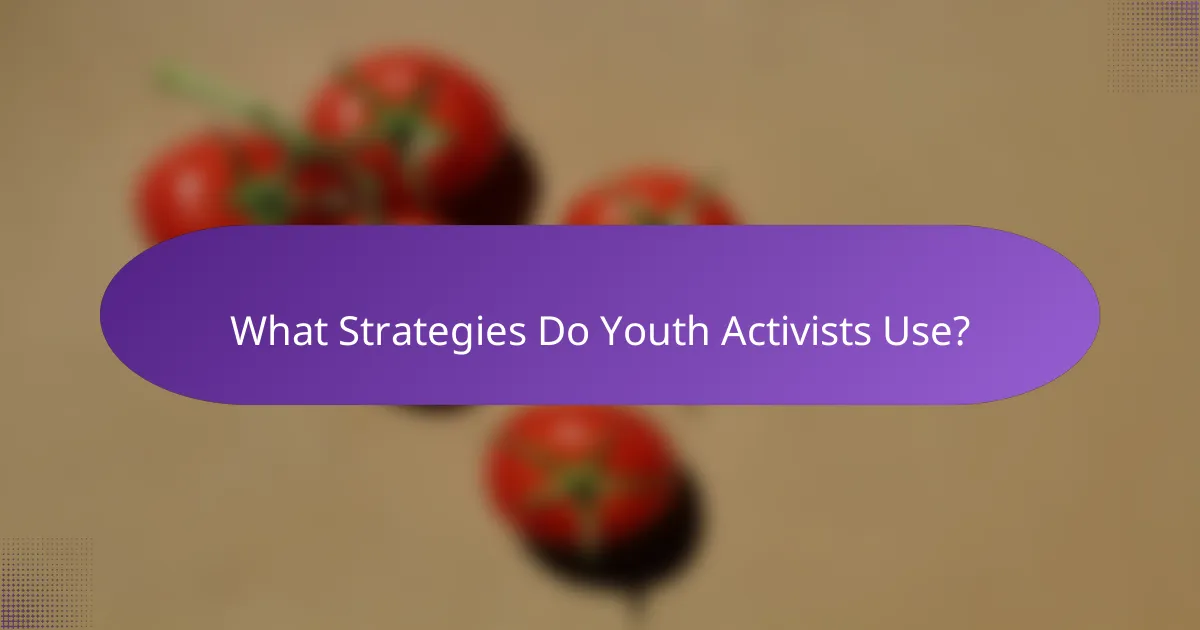
What Strategies Do Youth Activists Use?
Youth activists employ various strategies to amplify their voices and effect change in modern civil rights movements. These strategies often leverage technology, community involvement, and partnerships with established organizations to maximize impact.
Digital campaigns and hashtags
Digital campaigns and hashtags are powerful tools for youth activists, allowing them to spread awareness quickly and engage a global audience. By creating memorable hashtags, activists can unify their messages and encourage widespread participation across social media platforms.
For example, movements like #BlackLivesMatter and #FridaysForFuture have gained traction through strategic online campaigns, mobilizing thousands to advocate for social justice and climate action. These campaigns often include eye-catching graphics, videos, and calls to action that resonate with younger audiences.
Community engagement initiatives
Community engagement initiatives focus on building local support and fostering direct connections with affected individuals. Youth activists often organize events such as workshops, town halls, and rallies to educate their peers and community members about pressing issues.
These initiatives can vary in scale, from small neighborhood meetings to larger public demonstrations. Engaging with local leaders and stakeholders is crucial for ensuring that the initiatives address the specific needs and concerns of the community.
Collaborations with established organizations
Collaborating with established organizations can amplify the efforts of youth activists by providing resources, expertise, and broader networks. Partnerships with nonprofits, advocacy groups, and educational institutions can enhance credibility and offer logistical support for campaigns.
For instance, youth-led organizations often partner with larger civil rights groups to co-host events or share platforms, which can lead to increased visibility and funding opportunities. Such collaborations can also help in navigating regulatory frameworks and accessing necessary permits for public demonstrations.
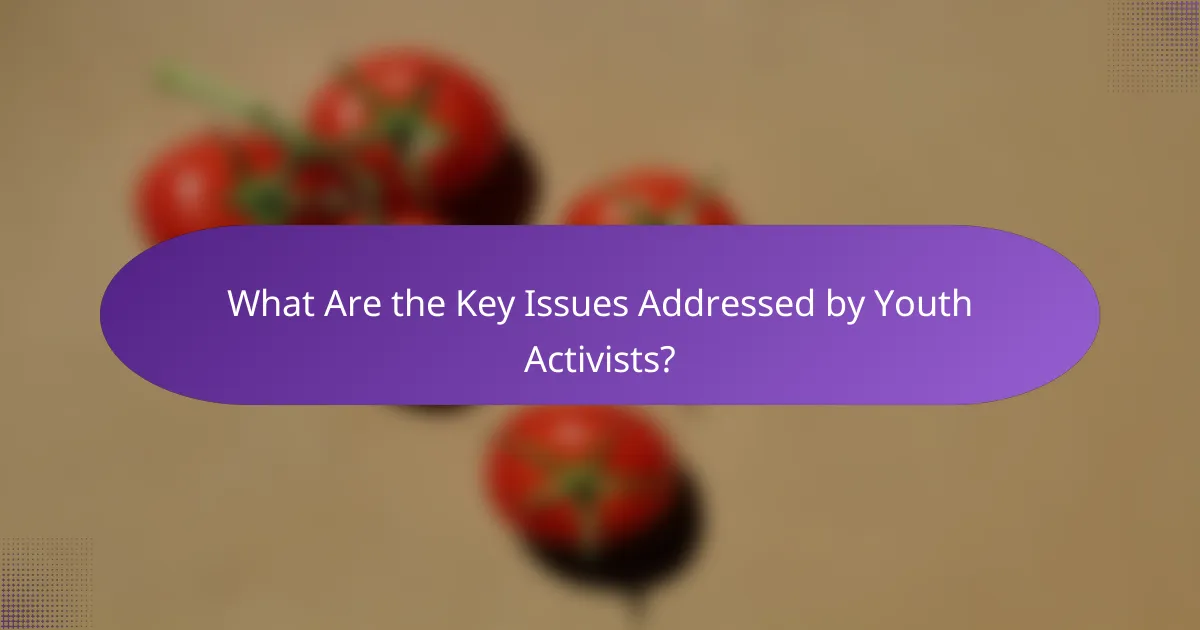
What Are the Key Issues Addressed by Youth Activists?
Youth activists focus on critical issues that impact society, including climate change, racial equality, and gun control. Their efforts aim to drive change and raise awareness about these pressing matters affecting their communities and future generations.
Climate change and environmental justice
Youth activists are at the forefront of the climate change movement, advocating for sustainable practices and policies. They emphasize the need for environmental justice, which addresses the disproportionate impact of climate change on marginalized communities.
Activists often organize events such as climate strikes and community clean-ups to raise awareness and promote action. They encourage individuals to adopt eco-friendly habits, such as reducing waste and supporting renewable energy initiatives.
Racial equality and police reform
Racial equality remains a significant focus for youth activists, particularly in the wake of high-profile incidents of police violence. They advocate for systemic changes to ensure fair treatment and justice for all individuals, regardless of race.
Efforts include campaigns for police reform, such as calls for increased accountability and transparency within law enforcement agencies. Activists often work with local organizations to promote dialogue and community engagement on these issues.
Gun control and violence prevention
Youth activists are increasingly vocal about gun control and violence prevention, pushing for stricter regulations to enhance public safety. They highlight the need for comprehensive background checks and restrictions on assault weapons to reduce gun violence.
Many young activists participate in marches and advocacy campaigns to raise awareness about the impact of gun violence on communities. They also promote educational programs that focus on conflict resolution and mental health support as preventive measures.
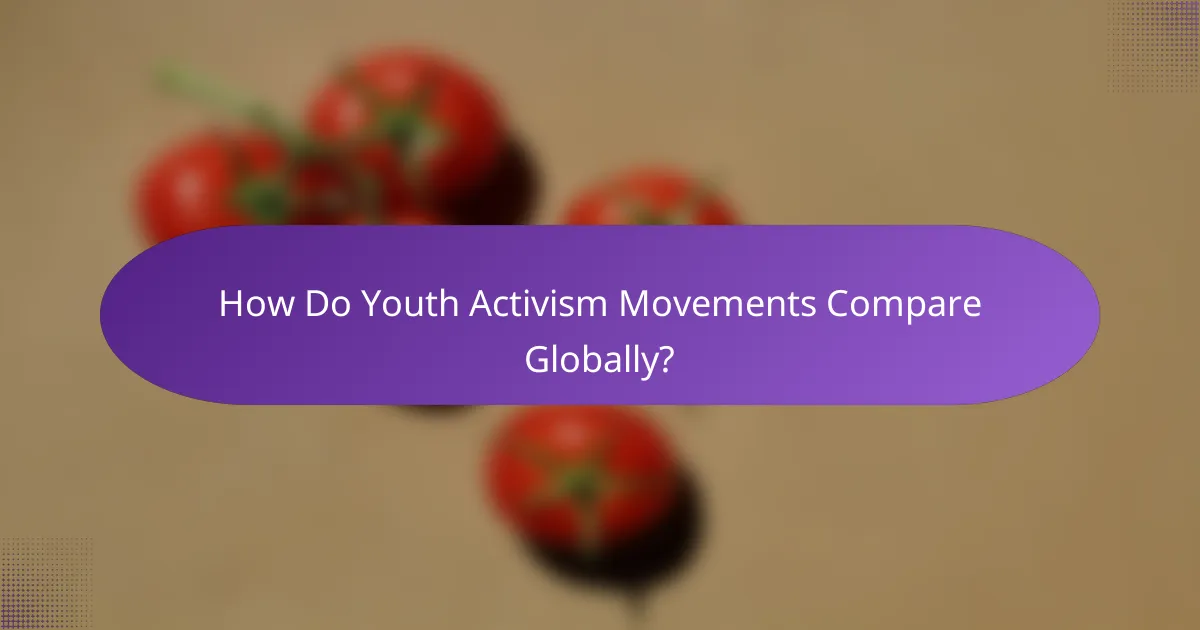
How Do Youth Activism Movements Compare Globally?
Youth activism movements share common objectives and strategies across different countries, but they also reflect unique cultural contexts that shape their approaches. Understanding these similarities and differences can provide insights into the effectiveness and challenges faced by young activists worldwide.
Similarities in goals and methods
Across the globe, youth activism movements often aim for social justice, environmental sustainability, and political reform. Common methods include organizing protests, leveraging social media for awareness, and engaging in community outreach to mobilize support.
For instance, movements like Fridays for Future and Black Lives Matter utilize digital platforms to amplify their messages and reach a broader audience. These shared goals and methods highlight a collective desire among youth to influence policy and drive change.
Differences in cultural context
Cultural context significantly influences how youth activism is expressed and received in different regions. In some countries, young activists may face governmental repression, while in others, they might enjoy more freedom to express dissent and advocate for change.
For example, youth movements in Western nations often focus on issues like climate change and racial equality, while in some developing countries, activism may center around basic human rights and access to education. Understanding these cultural nuances is essential for fostering effective global solidarity among youth activists.
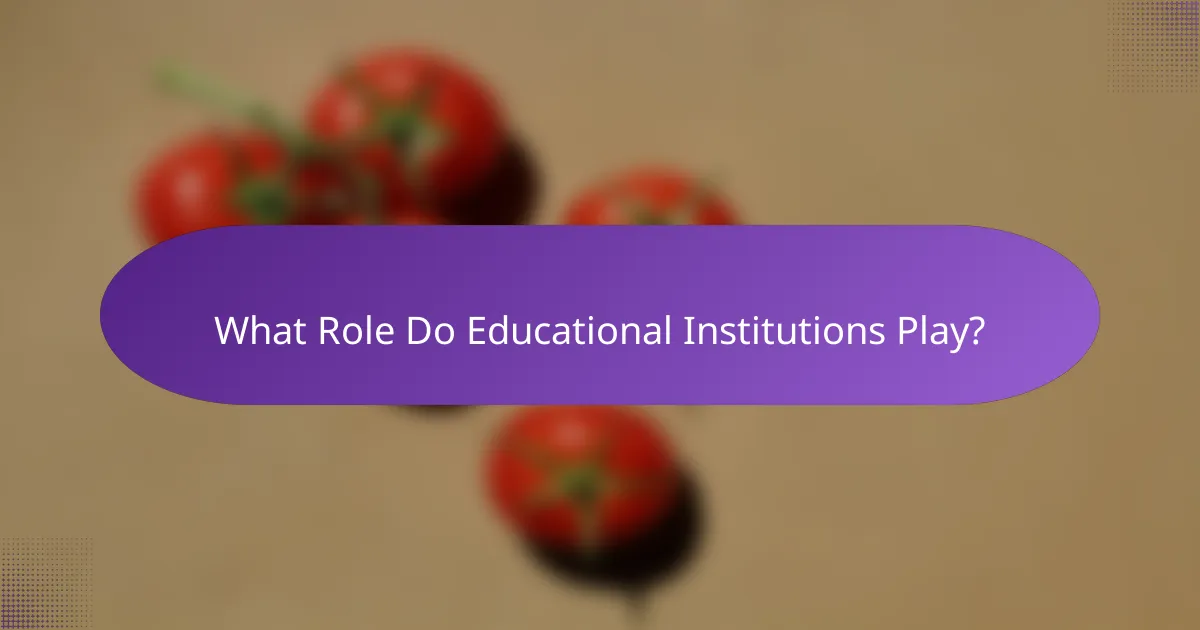
What Role Do Educational Institutions Play?
Educational institutions play a crucial role in shaping youth activism by providing platforms for engagement, resources for advocacy, and opportunities for leadership development. Schools and universities often serve as incubators for social movements, fostering environments where students can express their views and mobilize for change.
Support for activism through programs
Many educational institutions support activism by offering programs that encourage civic engagement and social responsibility. These can include workshops, mentorship opportunities, and funding for student-led initiatives. For instance, universities may provide grants for organizing events or campaigns that address social issues, allowing students to gain practical experience in activism.
Additionally, some schools have established clubs or organizations focused on specific causes, such as environmental justice or racial equality. These groups can facilitate networking and collaboration among students, amplifying their collective voice and impact.
Challenges faced by student activists
Student activists often encounter significant challenges, including institutional resistance and limited resources. Some educational institutions may prioritize academic performance over activism, leading to a lack of support for student initiatives. This can create an environment where students feel discouraged from pursuing their advocacy efforts.
Moreover, student activists may face backlash from peers or administration, particularly when addressing controversial topics. Navigating these challenges requires resilience and strategic planning, such as building coalitions with like-minded organizations to strengthen their efforts and increase visibility.
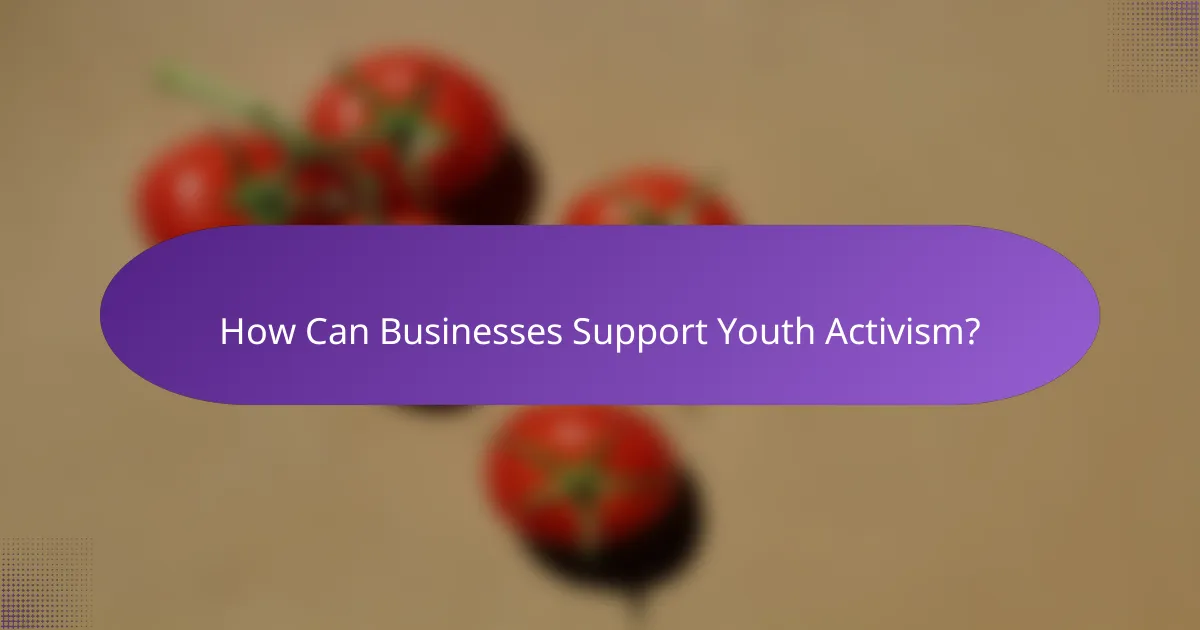
How Can Businesses Support Youth Activism?
Businesses can play a crucial role in supporting youth activism by engaging with young leaders and providing resources that amplify their voices. This support can take many forms, including partnerships, funding, and sponsorship opportunities that align with the values and goals of youth-led movements.
Partnerships with youth-led organizations
Forming partnerships with youth-led organizations allows businesses to collaborate directly with young activists. These partnerships can provide mutual benefits, such as increased visibility for the organization and enhanced community engagement for the business.
To establish effective partnerships, businesses should identify organizations that align with their corporate values and social responsibility goals. Engaging in joint initiatives, such as community events or awareness campaigns, can foster a strong relationship and demonstrate commitment to social causes.
Funding and sponsorship opportunities
Financial support is vital for youth-led organizations to sustain their initiatives and expand their reach. Businesses can offer funding through grants, sponsorships, or donations, which can significantly impact the success of youth activism efforts.
When considering funding opportunities, businesses should evaluate the specific needs of the organizations they wish to support. This could include direct financial contributions, in-kind donations, or sponsorship of events that promote youth activism. Establishing clear criteria for funding can help ensure that resources are allocated effectively and transparently.
